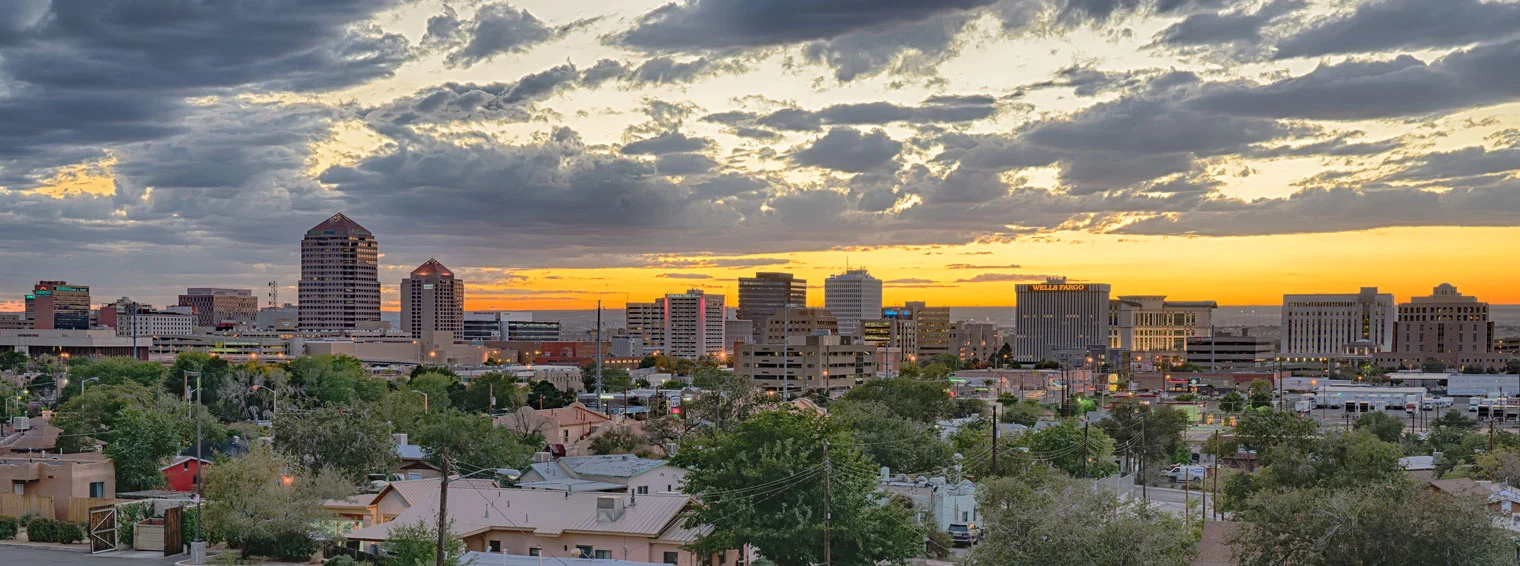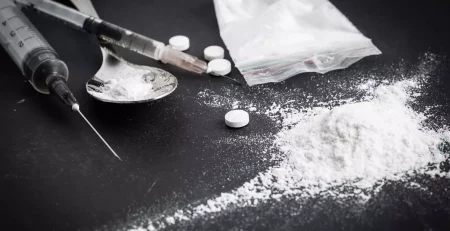What is the Heroin Capital of New Mexico?
Historic Heroin Hubs and the Rise of Fentanyl in New Mexico
With the potential fourth wave of a crippling opioid epidemic baring down on New Mexico in the form of xylazine-laced fentanyl—more specifically in Albuquerque, it’s easy to forget about the roots of struggles of heroin abuse in New Mexico.
But if there was an epicenter to this epidemic in the state, what is the heroin capital of New Mexico?
Currently, it is true that Albuquerque holds the title of the heroin capital of New Mexico, with drug use and overdose rates eclipsing all other cities in the state. And with this fourth wave emerging as we speak, the surging overdose deaths are only primed to increase for the foreseeable future.
Believe it or not, the heroin abuse problem in New Mexico didn’t begin in Albuquerque. In fact, the state’s most significant challenges were in Northern New Mexico, in the rural areas and outskirts of Santa Fe.
In this article, we focus on the state of New Mexico’s current struggles with heroin abuse, and what the future looks like concerning overdose prevention, public health efforts involving health and human services, and behavioral health treatment options.
Keep reading to learn more, and remember we are here for confidential support at any time if you or a loved one need help with heroin or other opioids.
Northern New Mexico and its Early Drug Abuse Challenges

It’s easy to assume that the drug addiction challenge in New Mexico began much further south, closer to the border. However, Santa Fe was the hotbed, and the go-to for any heroin addict in the state.
The area in question? It’s not downtown Santa Fe—the large city center where you would expect a drug epidemic to spark. Instead, this was in the rural areas of Rio Arriba County, in places like Espanola and Chimayo—two different locations with very similar stories to tell.
New Mexico and Rio Arriba County: Ground Zero for Drug Trafficking
Up until the early 1970s, drug money in the United States was mostly derived from cocaine and marijuana. There was one primary drug cartel in Mexico that handled the smuggling that satisfied America’s lean toward substance abuse. The Guadalajara Cartel, which would ultimately splinter and give birth to modern-day figures like El Chapo and others, dabbled little in the heroin trade.
This changed after America returned from the Vietnam War. With many soldiers returning from the area already addicted to heroin, the demand for the drug increased significantly almost overnight. From that point, Mexican black tar heroin was born, and Rio Arriba County would never be the same.
Generational Use of Mexican Black Tar Heroin
In towns like Espanola and Chimayo, it didn’t take long for the illegal drugs along trade routes to the Midwest to swallow up the residents in the area. Currently dealing with third and fourth-generation heroin addiction, this area dominated in usage and overdose statistics from the 1970s, well into the early 2000s.
It was this trend that culminated in a law enforcement sweep in the area that residents today still talk about.
Get Effective Detox and Rehab Options at Icarus
The September 1999 Raids in Chimayo
In September of 1999, a huge militia consisting of federal, local, and state authorities stormed down on Chimayo, a small town in Rio Arriba County also well know for its green chile harvest.
Officers from the New Mexico Department of Narcotics, the DEA, and ATF, along with assorted state agencies including the Espanola Police Department, began kicking down doors from one end of town to the other.
Targeting individuals who had been suspected of participating in the heroin trade for decades, the law enforcement combination of state and government agencies arrested over 200 people that day.
Helicopters descended on the area, and in a town of just over 3,000—a few hours later, there was hardly a family untouched by the event. The truth is, this small area neighboring Espanola and a half hour north of Santa Fe is still dealing with the aftershocks of that raid over two decades ago.
Years of domestic violence and a lack of human services for substance abuse are all equally to blame for the drug-related challenges. As time continued, other drugs like methamphetamine arrived on the scene, only compounding the situation. To this day, this area of Rio Arriba County is still plagued by opioids. But this time, it’s fentanyl.
From Heroin to Fentanyl, Las Cruces to Albuquerque

Shifting from New Mexico’s northern regions, according to the Substance Abuse and Mental Health Services Administration (SAMHSA), the current focus of substance use and drug-related challenges is centered on Albuquerque rehab and treatment availability, as well as interdiction and enforcement.
But with a large concentration of Native American Reservation Land, perhaps no other demographic has felt the weight of substance use as much as the tribal communities.
New Mexico’s Native American Population & Substance Use
According to studies, heroin and other drug use has been on a steady incline among Native Americans around Albuquerque since 2000. More recently published data highlights the fact that the overdose death rate is 16.2 per 100,000—an increase from the national average of 15.2 per 100,000.
What is the cause of the inflated numbers, and what is New Mexico doing compared to the rest of the nation as a response?
Get Accredited Treatment Programs at Icarus
The Potential Causes of Drug Use Rates In Albuquerque
One of the main driving factors leading to Albuquerque having the highest rate of fentanyl use and overdose in the state is an all-too-familiar tale: the prescription drug epidemic. To paint a clear picture of how the segue from heroin to fentanyl transpired, examining data from the early 2000s is key.
Between 2005 and 2010, Albuquerque had rates of prescription drug use, most notably those of morphine and oxycontin, that soared higher than the national average—6.4% to 4.9, to be exact. It was during this same period that many other states were dealing with this first wave of the opioid epidemic.
A Perfect Storm Created by Rampant Painkiller Prescribing
Sometime around 2011, after government crackdowns on prescription drugs, many cities and states experienced the second wave of the opioid epidemic, marked by skyrocketing rates of heroin use. It’s important to remember that by this point, New Mexico had already dealt with widespread heroin challenges, so the same boom never really occurred in New Mexico.
Instead of heroin, many cities around Albuquerque remained fixated on prescription pills. When Oxycontin was taken off the market, the illegal market for a newer drug, Roxicodone, skyrocketed in the American Southwest. This would create a perfect storm for cartels looking to introduce fentanyl into the market around 2020.
The Fentapill Epidemic

In states like New Mexico, Arizona, and California, the fentanyl epidemic didn’t take hold through laced batches of the heroin supply. This isn’t to say that the black tar supply didn’t experience increased amounts of fentanyl—but the focus remained on the state’s love affair with pain pills.
When the rest of the United States was dealing with adulterated batches of the heroin supply, New Mexico had a more sinister issue brewing. Counterfeit pills, known as “fentapills” and “blues” began circulating in massive numbers. The influx of these pills was so intense, that nearly all authentic pills were taken off the market seemingly overnight.
Overdoses became a massive issue not just among long-term heroin and pill abusers, but among casual users or those seeking black-market pain medication to alleviate the cost of prescriptions, or a complete lack of insurance altogether.
The Cheap Prices of Counterfeit Pills Come at a High Cost
Ultimately, illicit fentanyl would be found in nearly every type of painkiller imaginable. Widespread overdose deaths were reported from ingestion of what people thought were 30 mg roxycodone pills—normally a small to moderate dose.
However, when laced with fentanyl, this became a deadly dose for most users. Unfortunately, one of the largest demographics impacted by these deaths was young people under the age of 18.
So where does New Mexico stand currently, and what are treatment providers doing to curb this epidemic?
On the Front Lines of the 4th Wave of the Opioid Epidemic

With a 4th wave of the epidemic currently impacting New Mexico, mental health and substance abuse treatment services are operating at full speed as frontline soldiers in the opioid war. Icarus Behavioral Health, one of the leading providers of substance use recovery, is leading the charge from the epicenter.
Located in Albuquerque, Icarus Behavioral Health has a long-standing history of providing cutting-edge treatment for those looking to recover from heroin and synthetic opioid abuse disorders. With expertly trained, compassionate staff, Icarus utilizes multiple forms of evidence-based and holistic care, deployed through individualized treatment programs for our clients.
Up To 100% of Rehab Costs Covered By Insurance
Reach Out to Icarus and Get Support to Overcome Opioids
With the availability of multiple care levels at Icarus Behavioral Health, and with locations in Albuquerque as well as Rio Rancho, we are able to accommodate clients from all walks of life, proving that with the right team by your side, long-term recovery is possible.
If you or someone you love is currently battling an addiction to fentanyl, heroin, prescription drugs, or other opioids, contact our admissions team today. We work with a plethora of insurance providers to streamline our admissions process, ensuring you get the treatment you need, when you need it
All calls are confidential, so please reach out for support today.











